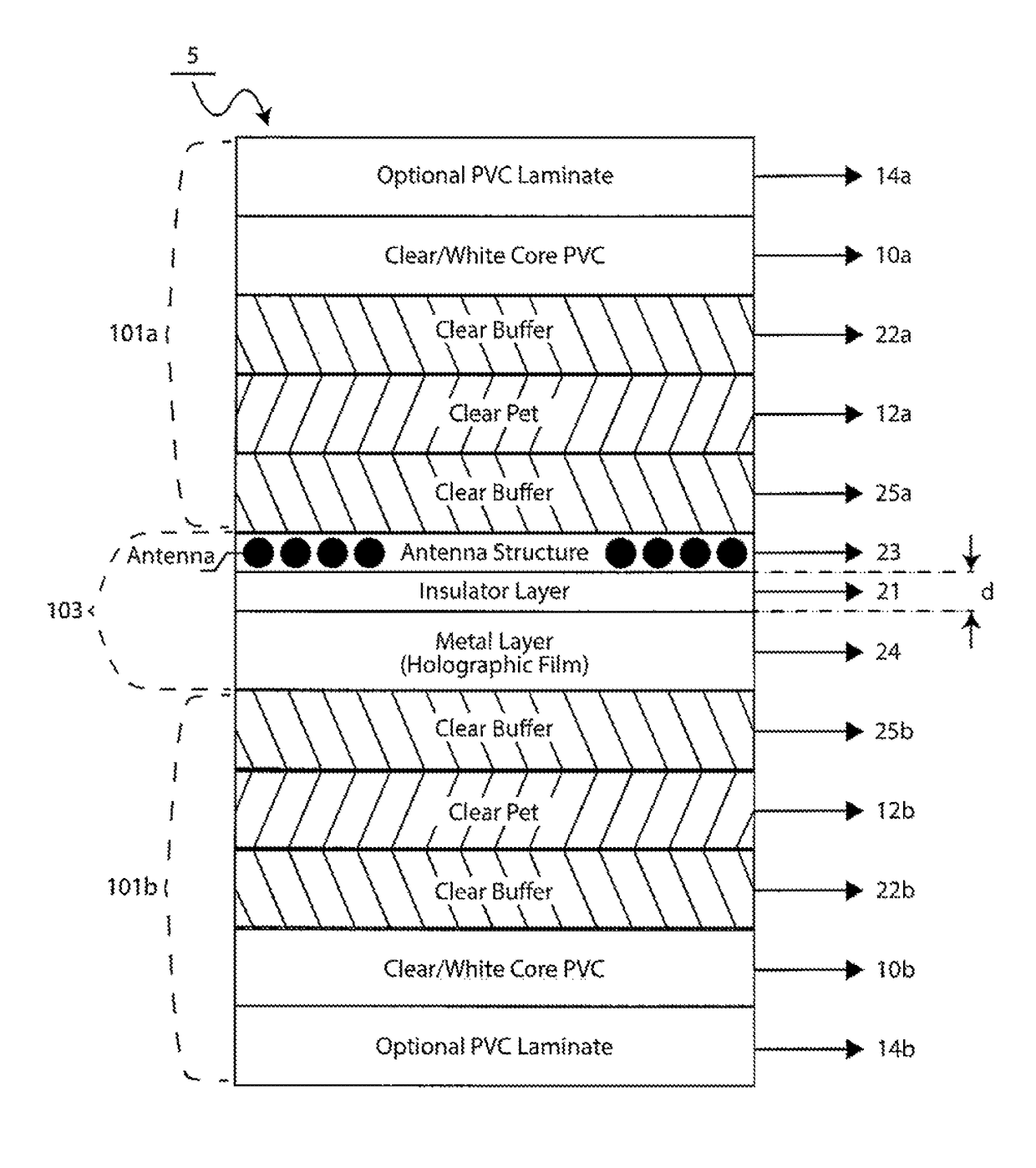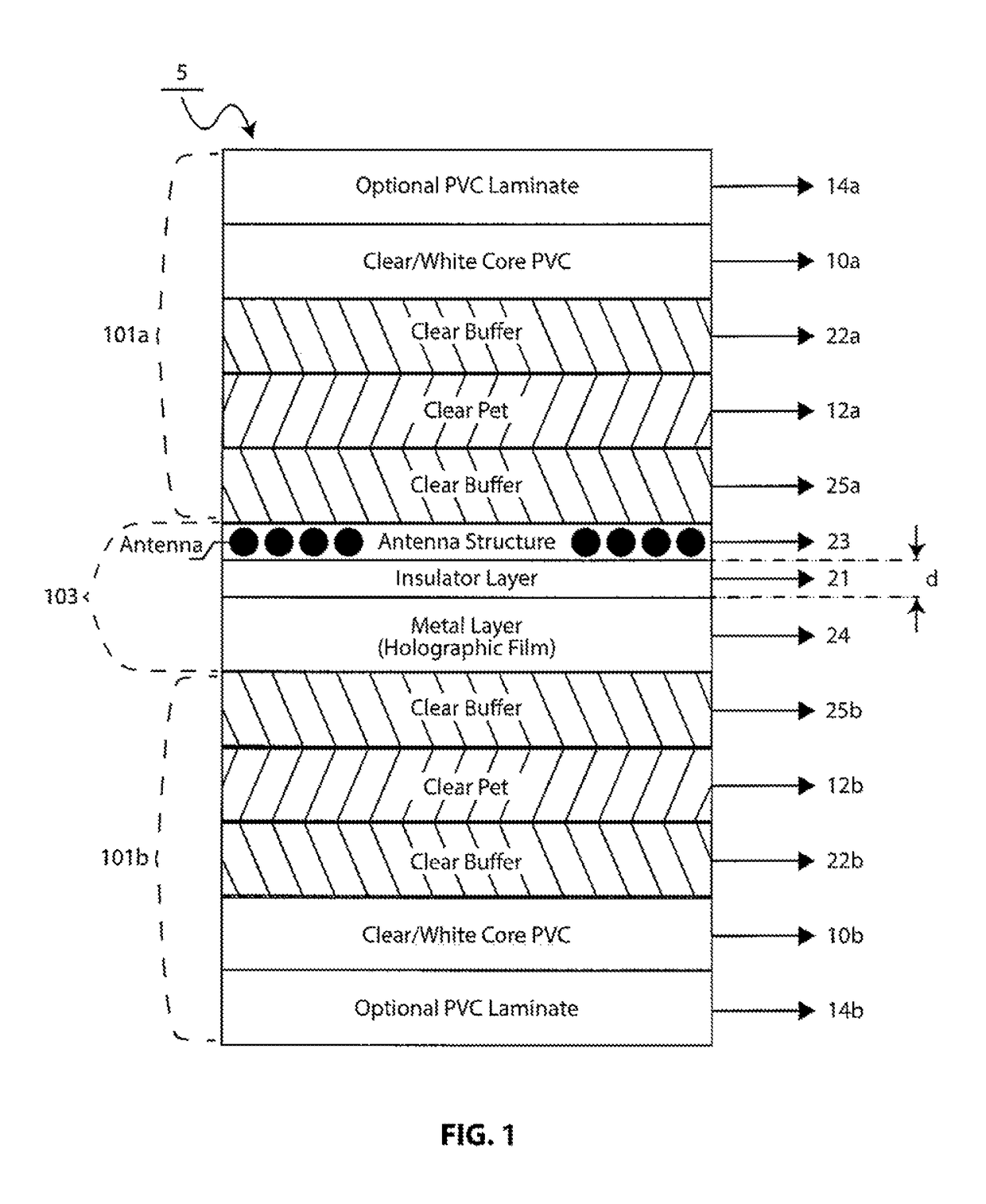Card with metal layer and an antenna
a metal foil/film/layer, multi-layer technology, applied in the direction of instruments, electrical/magnetic thickness measurement, radiating element structural forms, etc., can solve the problems of not being able to just make the insulator layer arbitrarily thick, not being able to meet the needs of insulator layer thickness, etc., to achieve reliable communication and enhance the transmission/reception of signals
- Summary
- Abstract
- Description
- Claims
- Application Information
AI Technical Summary
Benefits of technology
Problems solved by technology
Method used
Image
Examples
Embodiment Construction
[0019]Referring to FIGS. 1 through 4 there is shown a generally symmetrical type of card structure illustrating the use of buffer layers in a card construction to absorb the difference between layers having substantially different characteristics which enables many different types of sturdy and secure cards to be manufactured. Card 5 includes (in the Figures) a top section 101a, a correspondingly symmetrically shaped bottom section 101b and a center section 103.
[0020]Top section 101a includes a PVC overlay 14a mounted over a core PVC layer 10a, overlying a buffer layer 22a, which, in turn, overlies a PET layer 12a, overlying a buffer layer 25a.
[0021]Bottom section 101b includes a PVC overlay 14b formed under a core PVC layer 10b, underlying a buffer layer 22b, which underlies a PET layer 12b, underlying a buffer layer 25b. The buffer layers reduce the stress between the very dissimilar materials enabling a more stable structure having a much greater life time and of greater sturdin...
PUM
| Property | Measurement | Unit |
|---|---|---|
| thickness | aaaaa | aaaaa |
| thickness | aaaaa | aaaaa |
| thickness | aaaaa | aaaaa |
Abstract
Description
Claims
Application Information
 Login to View More
Login to View More - R&D
- Intellectual Property
- Life Sciences
- Materials
- Tech Scout
- Unparalleled Data Quality
- Higher Quality Content
- 60% Fewer Hallucinations
Browse by: Latest US Patents, China's latest patents, Technical Efficacy Thesaurus, Application Domain, Technology Topic, Popular Technical Reports.
© 2025 PatSnap. All rights reserved.Legal|Privacy policy|Modern Slavery Act Transparency Statement|Sitemap|About US| Contact US: help@patsnap.com



